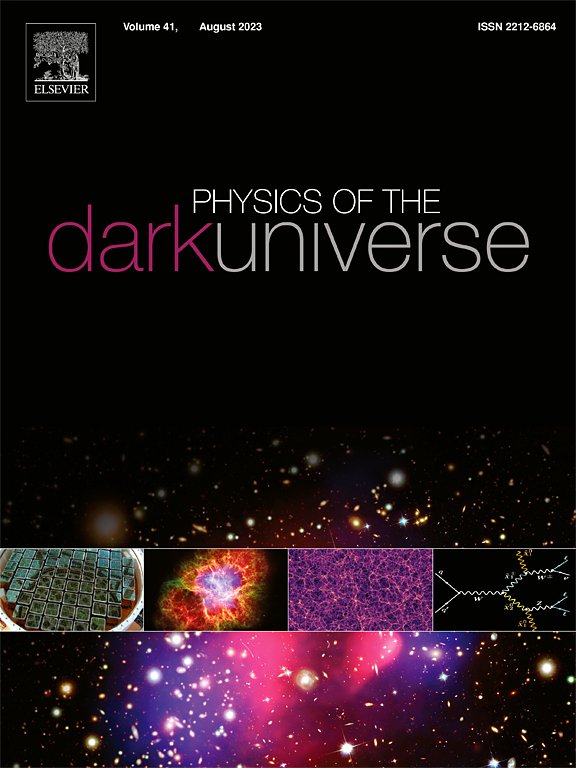从DESI 2024数据看动态暗能量
IF 5
2区 物理与天体物理
Q1 ASTRONOMY & ASTROPHYSICS
引用次数: 0
摘要
来自DESI(暗能量光谱仪器)数据发布1 (DR1) Adame等人(2024)的最新发现,结合来自宇宙微波背景和超新星的数据,表明动态暗能量比宇宙常数更受欢迎。本研究考虑了暗能量状态方程(EoS)的Chevallier-Polarski-Linder (CPL)参数化,并在最近的过去指出了一个可能的幻影势垒穿越。尽管CPL是最常用的参数化,但最近的研究指出了其先验选择和参数退化的问题。本文提出了暗能量状态方程(EoS)的另一种双参数参数化方法。在更高的红移下,它的行为就像宇宙常数。在红移z<;1处,该参数化非常接近CPL形式,但在较低的红移处偏离了它。我们的研究结果还表明,暗能量的EoS的当前值类似于精华,有证据表明最近穿越了幻相屏障,支持Adame等人(2024)的结论。此外,与哈勃太空望远镜和SH0ES数据Riess et al.(2022)相比,我们的模型显著降低哈勃张力至2.8σ左右,与标准化TRGB和Ia型超新星数据scolic et al.(2023)相比,该模型显著降低哈勃张力至1.6σ左右。使用贝叶斯因子和Akaike信息标准(ACI)的贝叶斯模型选择表明,我们的参数化比Λ CDM模型更有优势,与DESI2024的结果一致,并且更倾向于动态暗能量。本文章由计算机程序翻译,如有差异,请以英文原文为准。
Dynamical dark energy in the light of DESI 2024 data
The latest findings from the DESI (Dark Energy Spectroscopic Instrument) data release 1 (DR1) Adame et al. (2024), combined with data from the cosmic microwave background and supernovae, suggest a preference for dynamical dark energy over the cosmological constant. This study has considered the Chevallier–Polarski–Linder (CPL) parameterization for the dark energy equation of state (EoS) and has indicated a possible phantom barrier crossing in the recent past. Despite CPL being the most commonly used parameterization, recent research has pointed out issues with its prior selection and parameter degeneracies. In this paper, we propose an alternative two-parameter parameterization of the dark energy equation of state (EoS). At higher redshifts, it behaves like the cosmological constant. At redshifts , this parameterization closely approximates the CPL form but deviates from it at lower redshifts. Our findings also indicate that the current value of the EoS of dark energy resembles quintessence, with evidence of a recent crossing of the phantom barrier, supporting the conclusions in Adame et al. (2024). Furthermore, our model significantly reduces the Hubble tension to about when compared to Hubble Space Telescope and SH0ES data Riess et al. (2022), and to with standardized TRGB and Type Ia supernova data Scolnic et al. (2023). Bayesian model selection using Bayes factors and Akaike Information Criteria (ACI), shows a strong preference for our parameterization over the CDM model, aligned with the DESI2024 results and favoring dynamical dark energy.
求助全文
通过发布文献求助,成功后即可免费获取论文全文。
去求助
来源期刊

Physics of the Dark Universe
ASTRONOMY & ASTROPHYSICS-
CiteScore
9.60
自引率
7.30%
发文量
118
审稿时长
61 days
期刊介绍:
Physics of the Dark Universe is an innovative online-only journal that offers rapid publication of peer-reviewed, original research articles considered of high scientific impact.
The journal is focused on the understanding of Dark Matter, Dark Energy, Early Universe, gravitational waves and neutrinos, covering all theoretical, experimental and phenomenological aspects.
 求助内容:
求助内容: 应助结果提醒方式:
应助结果提醒方式:


